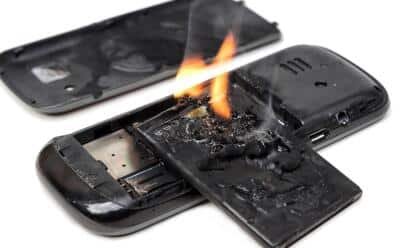What is Protection IC?
In addition to the protection IC functions of lithium batteries such as overcharge protection, over discharge protection, overcurrent protection and short circuit protection functions, lithium batteries also have other new protection IC functions.
Working principle of Protection IC
1.Overcurrent protection during charging
When an overcurrent is suddenly generated when the charger is connected for charging (such as damage to the charger), the circuit immediately detects the overcurrent. At this time, Cout will switch from high to low, and the power MOSFET will switch from on to off to realize the protection function.
2.Lock mode when overcharging
Usually, the protection IC will pass a period of delay during overcharge protection, and then the power MOSFET will be cut off to achieve the purpose of protection. When the lithium battery voltage drops to the release point (overcharge hysteresis voltage), it will be restored.
And then it will continue to: charge →protect →discharge →charge →discharge.
The safety problem of this state will not be effectively solved. The lithium battery will continue to repeat the action: charging→discharging→charging→discharging.
And the gate of the power MOSFET will repeatedly be in an alternating state of high and low voltages. This may make the MOSFET hot and reduce battery life, so the lock mode is very important.If the lithium battery protection circuit has a lock mode when overcharging protection is detected, the MOSFET will not get hot, and the safety is relatively improved a lot. After the overcharge protection, as long as the charger is connected to the battery pack, it will enter the overcharge lock mode. At this time, even if the voltage of the lithium battery drops, there will be no recharging. Remove the charger and connect the load to restore the state of charge and discharge.
3.Reduce the size of protection circuit components
The delay capacitors for overcharge and short circuit protection are integrated into the protection IC to reduce the size of the protection circuit components.
Requirements for protecting IC performance
1.High-precision overcharge protection
When a lithium-ion battery is in an overcharged state, in order to prevent the internal voltage from rising due to temperature rise, the state of charge must be cut off. The protection IC will detect the battery voltage, and when overcharging is detected, the power MOSFET detected by overcharging will cut it off and the charging will be cut off. At this time, it should be noted that the detection voltage of overcharging is highly precise. When the battery is charged, it is a matter of great concern to the user to charge the battery to a full state, while taking into account safety issues, so it is necessary to cut off the state of charge when the allowable voltage is reached. To meet these two conditions at the same time, there must be a high-precision detector. The current precision of the detector is 25mV, and the precision will need to be further improved.
2.Reduce the power consumption of the protection IC
With the increase of use time, the voltage of the lithium-ion battery that has been charged will gradually decrease, and finally it will fall below the standard value of the specification. At this time, it needs to be recharged.If you continue to use it without charging, the battery may not be able to continue to be used due to excessive discharge.In order to prevent over-discharge, the protection IC must detect the battery voltage. Once it reaches below the over-discharge detection voltage, the power MOSFET of the discharging party must be cut off and the discharge cut off.However, at this time, the battery itself still has natural discharge and the current consumed by the protection IC, so it is necessary to minimize the current consumed by the protection IC.
3.Overcurrent/short circuit protection requires low detection voltage and high precision requirements
When a short circuit is caused by unknown reasons, the discharge must be stopped immediately.The detection of overcurrent is based on the Rds (on) of the power MOSFET as the inductive impedance to monitor its voltage drop. If the voltage at this time is higher than the overcurrent detection voltage, the discharge will stop.In order for the Rds (on) of the power MOSFET to be effectively used in the charging current and discharging current, the impedance value needs to be as low as possible. At present, the impedance is about 20mW~30mW, so that the overcurrent detection voltage can be lower.
4.High Voltage Resistance
When the battery pack is connected to the charger, a high voltage will be generated instantly. So the protection IC should meet the requirements of high voltage resistance.
5.Low battery power consumption
In the protection state, its static current consumption must be less than 0.1µA.
6.Zero volt rechargeable
Some batteries may be stored for too long or abnormally during the process, causing the voltage to be as low as 0V, so the protection IC needs to be charged at 0V.
Development prospects of protection IC
As mentioned earlier, in the future, the protection IC will further improve the precision of detecting voltage. And it will reduce the current consumption of the protection IC, and improve the malfunction prevention function. At the same time, the high withstand voltage of the charger connection terminal is also the focus of research and development.In terms of packaging, it has gradually shifted from SOT23-6 to SON6 packaging, and there will be CSP packaging in the future, and even COB products will appear to meet the current emphasis on thinness and shortness requirements.
In terms of functions, the protection IC does not need to integrate all functions. A single protection IC can be developed according to different lithium battery materials, such as only overcharge protection or over discharge protection, which can greatly reduce the cost and size.
Of course, the single integration of functional components is the constant goal. For example, mobile phone manufacturers are currently moving towards a dual-chip chipset with peripheral circuits such as protection ics, charging circuits, and power management ICS and logic ics. However, at present, it is difficult to reduce the open circuit impedance of the power MOSFET and integrate it with other ICS. Even if a single chip is made with special technology, maybe the cost will be too high. Therefore, the monocrystalline integration of the protection IC will take a while to solve.
What is a battery charger IC?
Battery charger ICs are integrated circuits that are used to charge batteries. There are several types of battery charger ICs. Linear chargers use a voltage-controlled source to force a fixed voltage to appear at the output terminal. Switching chargers use an inductor, transformer, or capacitor to transfer energy from the input to the battery in discrete packets. Some battery charger ICs are designed to charge lithium (Li) ion or lead acid batteries. Others are suitable for charging nickel-cadmium (NiCd) or nickel-metal-hydride (NiMH) batteries. Important features for battery charger ICs include over-voltage protection and over-current protection. Devices with a soft-start feature condition the battery for several minutes before performing a fast charge. Devices with a charge status indicator have a built-in monitor that displays the amount of current supplied and/or the amount of charge applied. In response to concerns about the environmental impact of using lead (Pb) in solder finishes, some battery charger ICs do not contain lead in any form.
Prev Article: What is Inverter in Lithium Battery?
Next Article: Why Choose Lithium Batteries to Power Boats?



Leave A Comment